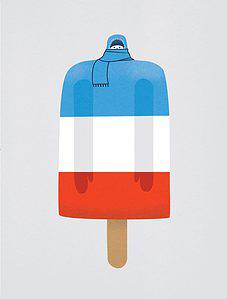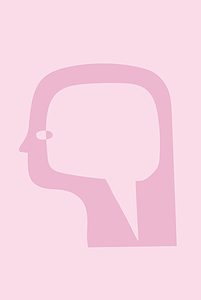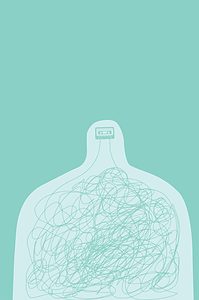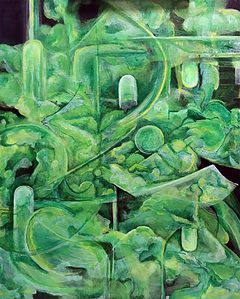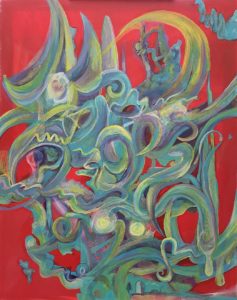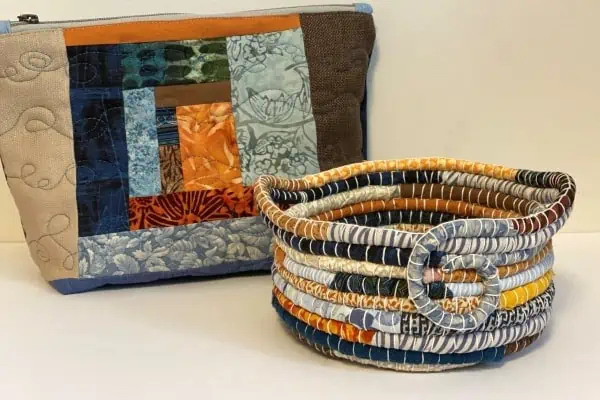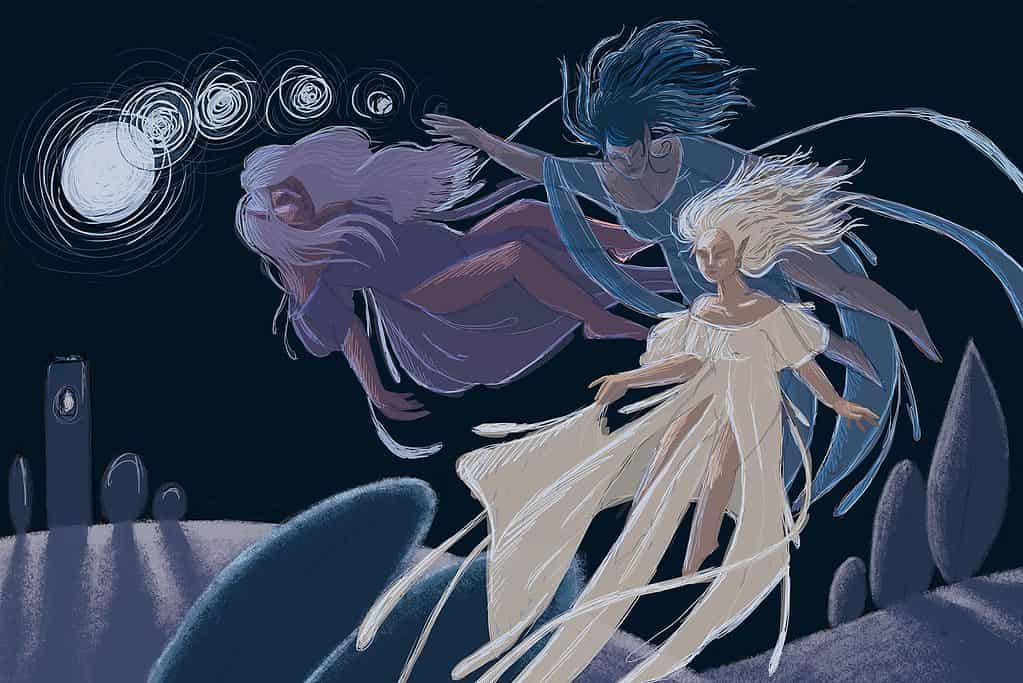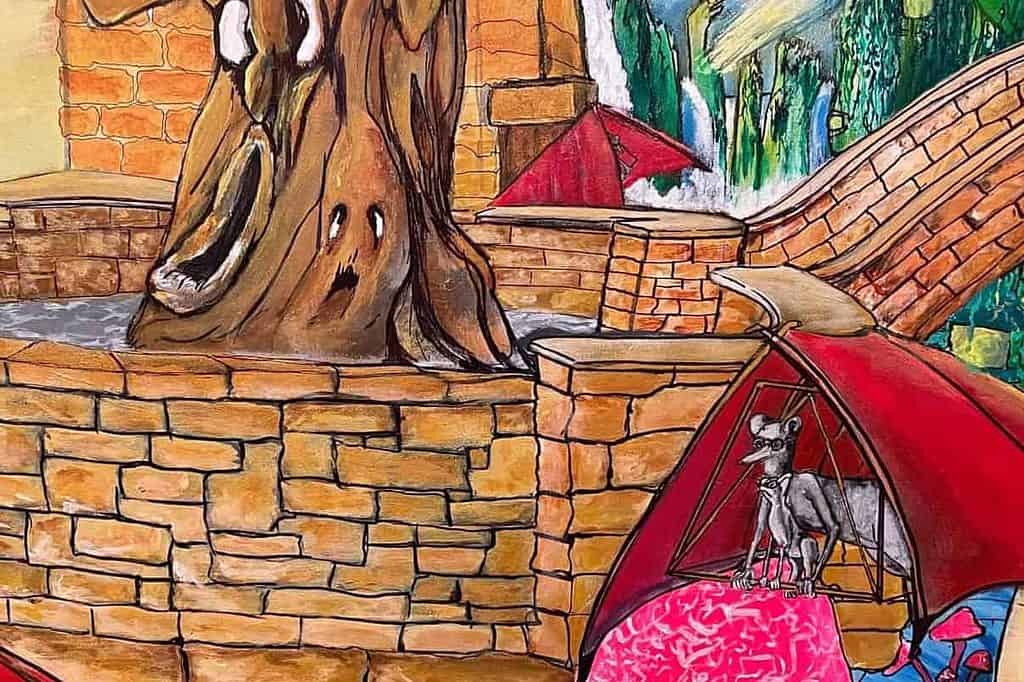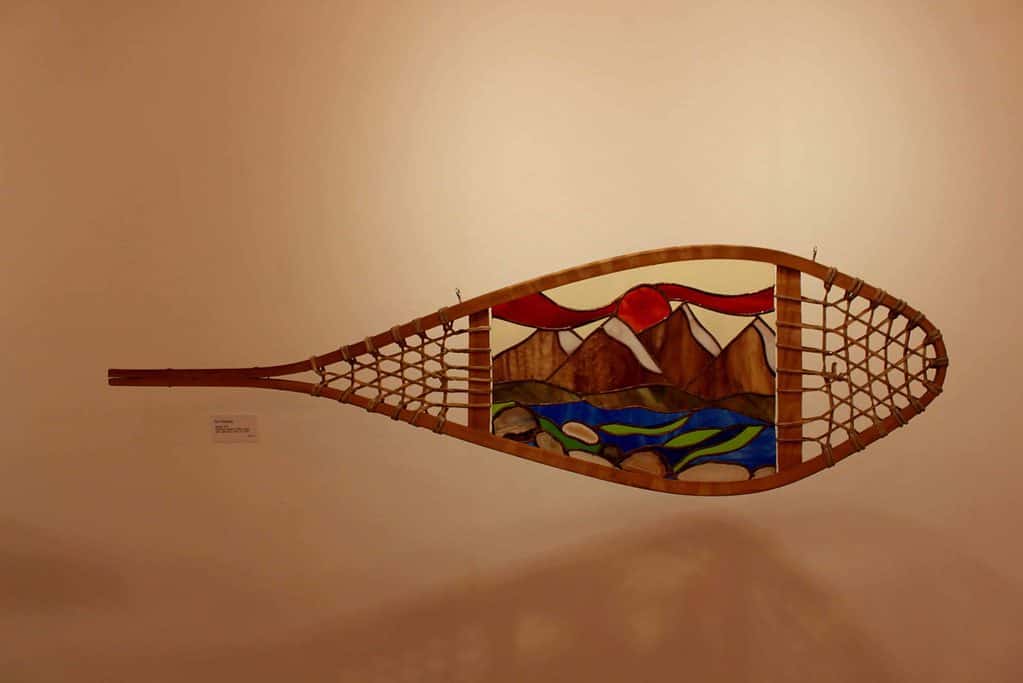On the surface, there is little to connect the two exhibitions currently showing at Arts Underground. In the Focus Gallery, Tedd Tucker’s Winter Sketches features stylized illustrations with simple forms and bold colours. Next door in the Edge Gallery, Heather Von Steinhagen’s Hidden Details comprises abstract paintings with organic forms and layers of mixed colour. The artists appear to be working on two entirely different dimensions; however, their motivations and intentions are similar. They are both, in their own way, pushing the boundaries of their previous work in these two personal and inward-looking exhibitions.
Tucker is an illustrator and designer whose work usually has a commercial purpose, such as book illustration, branding and novelty items including magnets and t-shirts. His simple, engaging style tends to be light-hearted with a lot of popular appeal. It also tends to be very literal. There is no ambiguity about what something represents.
This is in keeping with what we associate with an illustrator’s work, which is usually tied to a product. As Tucker points out, “illustrate” means to “shine light on.” Illustration typically serves a secondary function, complementing text, and is not often considered “fine art.
With Winter Sketches, Tucker turns the focus of his work on his own interests, rather than a client’s wishes and needs. He wanted to spend some time thinking about this extreme season of the year and the impact it has on him. It’s a departure from what Tucker usually does because he’s investigating his inner world rather than developing something at the request of others.
Because he is not bound to making literal illustrations people can easily interpret and understand, Tucker is able to make work that is less representational and more conceptual. He is able to ask himself, “what would my work look like if I tried to abstract it a bit more?”
One answer is his work called “Sun Months 1,” in which several yellow circles progress in size from small to large, back to small again. The circles are the sun going through its annual winter to summer and back again cycle. Tucker actually studied weather data and the hours of sun we get in a month, then tried to figure out how to convey that data graphically “without just being like a bar chart.”
As one may expect when his theme is winter, Tucker at times veers away from the light-hearted fare that typifies his work and ventures into slightly bleaker territory. “Mix Tape” features a simple outline of a human figure with a cassette tape in their head. The tape has unravelled and invaded the entire body, a tangled, chaotic scribble of ribbon. It’s a graphic representation of Tucker’s anxious state leading up to the show when he felt like he was “spinning loose and coming undone … and things are piling up inside.”
Tucker still injects a lot of humour and warmth in Winter Sketches, for example in “Layers 1” and “Layers 2.” Both graphically represent the complexity of dressing ourselves to go outside in the cold. Tucker’s recipe for “Sunshine Soup” is also something I can get on board for.
While the exhibition is a contemplation of winter’s effects on Tucker, it’s easy for us to identify with his ambivalent interpretations of this magical and challenging time of year. Tucker’s goal is to provide “minimalist illustrations to convey an idea, but leave enough space for your thoughts and feelings on the season to fill in the blanks.”
Next door in the Edge Gallery, Von Steinhagen is also taking her practice in a new direction with Hidden Details. Von Steinhagen has long been interested in surrealism and its association with the psychology and the subconscious, but also the spiritual and sacred. Like the surrealists, she often uses symbols to represent certain ideas or states. The paranormal also appears repeatedly in her past work—UFOs, aliens and monsters inhabit familiar Yukon-like landscapes.
The abstract paintings in Hidden Details do not contain any of these familiar symbols and conventions. The pieces came about almost haphazardly, “as a way to kill time, to use up old paint and relax,” Von Steinhagen says. She never intended to exhibit the paintings. “I just wanted to use paint and to let go and see what happens.”
What happened is that Von Steinhagen became totally absorbed in the process, following her intuition as she applied layers of paint. The results are totally abstract paintings, with not even a symbol in sight.
This departure from her previous works marks a turning point for Von Steinhagen. She is less concerned with her audience and more inward-focused. Previously, she would usually “be thinking about the viewer, not thinking about my process or my reflection. So I think that was the biggest change,” she says.
“If you’d talked to me five years ago, I would have thought I’d be in a different place,” she says, “But I think I’m seeing more in the intuitive and abstract paintings.”
Although the paintings are non-representational, there are still “hidden details” within the organic shapes that we recognize as familiar things. For instance, in the dreamy, green painting “Most of the Ghosts,” there are definitely forms that resemble paranormal beings. The human tendency to make sense of chaos by identifying recognizable objects is called pareidolia. It’s another aspect of our psychology that interests Von Steinhagen.
This abstract direction is something she plans to continue. It feels more natural to her, she says, less forced than her graphic style and more “in collaboration with my internal development. You know, that it’s in line with how I’m learning about the world.
“Like my interest in symbolism and the human understanding about what an apple could be, or what a snake is, kind of deal. And it’s kind of, over the years, I’ve understood that those moments of spirituality or sacred dimensions aren’t as tactile and as obvious as I might have assumed before. It’s more flowy and more subtle and I think that’s why these paintings are starting to emerge.”
Despite the pure abstraction of her new work, Von Steinhagen says there are still vestiges of her previous style that identify her work as Yukon-related.
“It’s still a Yukon landscape but more of an internal version,” she says.
In fact, the abstract paintings do look like strange and mystical landscapes. And though they may seem incomprehensible at first glance, the viewer is rewarded when they take the time to look at the pieces thoughtfully, to see what might emerge from the incredible depths and layers of colour and forms. That is what Von Steinhagen is hoping.
“That’s my underlying mission,” she says. “Like, how do I get people to look deeply and to think deeply? And hoping that my art can be a point of inquisitiveness.”
Winter Sketches and Hidden Details are on display at Arts Underground until January 25. The works are posted online. Arts Underground
Also check out the artists’ websites: tedtucker.com and heathersteinhagen.ca

